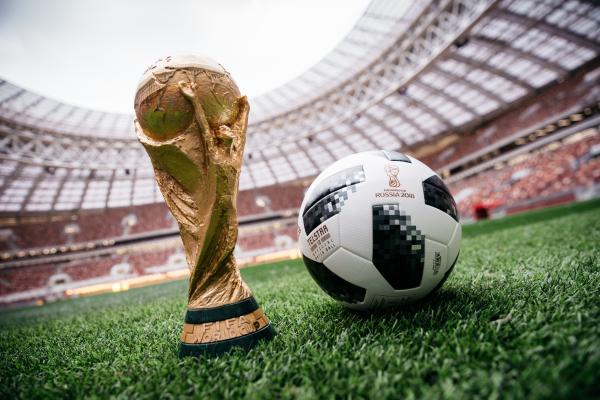 The World Cup ball is the focal point of the month-long display of skill, passion and ungodly talent displayed every 4 years on television displays across the world. Adidas spares no expense or creativity when creating the match ball used in each World Cup. Adidas became the provider and creator of the World Cup match ball in 1970. That year marks a special revolution for the beautiful game. At the time, the objective and issue, for World Cup organizers, was to have a ball that could be easily seen on TV. The original Telstar ball was perfection. It brought about the classic 32-panel black and white design that many individuals have grown to adore and love. The number of panels and balance of black and white brought about the perfect sphere and arguably created the modern looking
The World Cup ball is the focal point of the month-long display of skill, passion and ungodly talent displayed every 4 years on television displays across the world. Adidas spares no expense or creativity when creating the match ball used in each World Cup. Adidas became the provider and creator of the World Cup match ball in 1970. That year marks a special revolution for the beautiful game. At the time, the objective and issue, for World Cup organizers, was to have a ball that could be easily seen on TV. The original Telstar ball was perfection. It brought about the classic 32-panel black and white design that many individuals have grown to adore and love. The number of panels and balance of black and white brought about the perfect sphere and arguably created the modern looking
Continuing to revolutionize the
In 1994, Adidas introduced a poly-foam material inside of the Match ball, allowing or a softer feel. This also provided for a better touch and control, which translated into a higher quality of play during the World Cup. The 1998 World Cup in France saw the first colored Match ball. This was the first time that the traditional black and white style was not used. Another first for the World Cup ball was Adidas using an under glass print technology that increased the visibility of the ball while moving across the pitch.
In 2002 the first ever co-hosting World Cup nations (Korea & Japan) saw Adidas step away from the traditional Tango design by introducing the Fevernova ball. This led way to the slick design used in 2006 radically reduced the number of panels used to create the ball. The engineering allowed for smoother surfaces, making the ball more round and allowed for better play. In 2010, the Jabulani was most spherical ball produced and provided stable flight and perfect grip in all playing conditions.
Adidas, for its 20th Anniversary, reissued the Telstar at the 2018 World Cup. Redefining the way we look at the game again, the Telstar featured a microchip for the first time ever in an Official Premium Match ball. The chips allow for players to access statistical information regarding their performance with the ball. Players will need to access an app in order to track the statistics.
Need more 2018 World Cup Gear? 2018 World Cup Popular Boots
